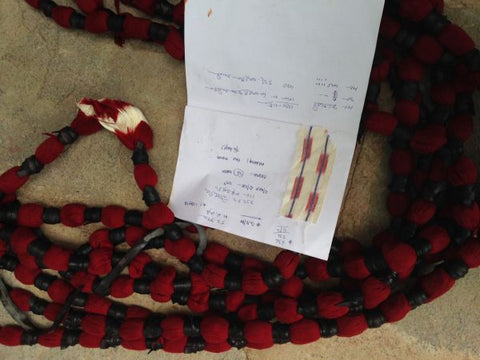Those of you with a soft spot for compassionate fashion make a statement with both your wardrobes and your dollars. You set high standards for style (unique), quality (impeccable) and fit (flattering). And when shopping with Mata, you celebrate the talents and traditions of artisans like those who handcraft our apparel and accessories in India and Nepal.
We partner with women’s cooperatives and artisan groups to preserve textile art forms that date back centuries, featuring block or screen printed fabric, hand embroidery, or ikat weaving in almost all of our designs.
What is Ikat?
While hand embroidery, and block and screen printing are common, you might be less familiar with a technique called "ikat" (pronounced "ee-kaht"). You’ll find this weave throughout our collections, as it's a beautiful handcrafted fabric that works for any season, and creates some eye-catching statement pieces.
To give you Mata Traders lovers a taste of how much goes into each and every one of these beautiful pieces, here's a bit about the history of the ikat weave.
Although ikat is popular all over the world, it is most popular in India, Indonesia, Japan and other Southeast Asian countries. It is said that the Nalgonda district of Andra Pradesh, India is where the ikat weave originated during the 10th century. At that time, a strip of ikat fabric was considered an extremely prized possession due to how long it took to make the fabric.
Each ikat weave has its own distinct style. The finished fabric is meant to look imperfect, almost fuzzy, which is accomplished by dyeing the yarns before they become yardage.
First the design, usually a hand-drawn zigzag or geometric pattern, is drawn on the fabric in pen. This requires the designer to measure along each strand to make sure the design will be placed in the correct spot when the yarn is woven into yardage. Then the yarn is tied tightly around the areas that were marked in pen. This will act as a resist when the fabric goes into the dye pot, keeping the covered areas undyed. In some cases, the resist is made from wax or clay.
The yarn is then stretched out and prepared to be dipped into the dye. Ikat's process of dyeing is very similar to tie dye, but is a bit more complicated.

The designer will submerge the yarn for approximately an hour, allowing the fibers to soak up as much dye as possible. In order to ensure that the color is being absorbed evenly, the designer needs to constantly agitate the pot. If the pot is not agitated, there will be darker/lighter spots in the fiber, called "hot spots."

Once the yarn is saturated and allowed to dry, the designer will cut off the resist. As you can see in the picture above, the yarn beneath the resist has maintained its original white color.
We are always impressed by the talents of our partner artisan groups, but learning about the craft behind the ikat process brings to light the dedication and skill the artisans bring to their work each day. Another example of how, together, we can fashion a better world!
Want to see the final pieces make from this centuries-old weaving style?




